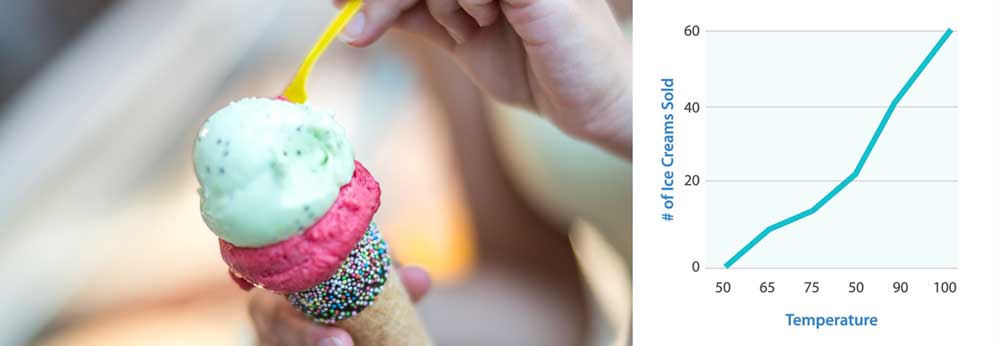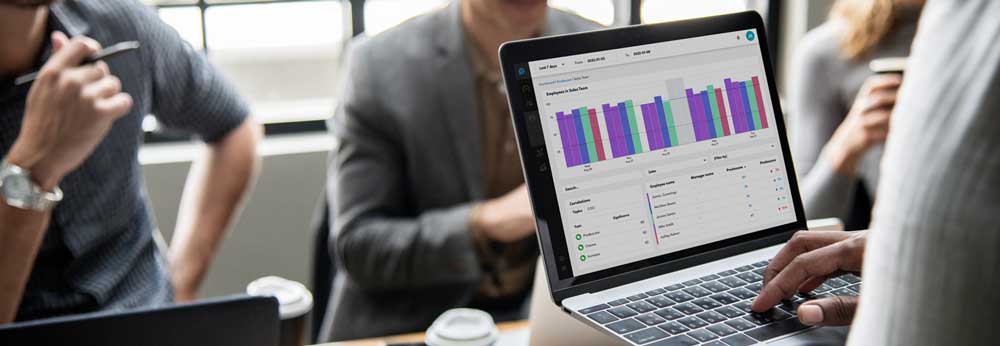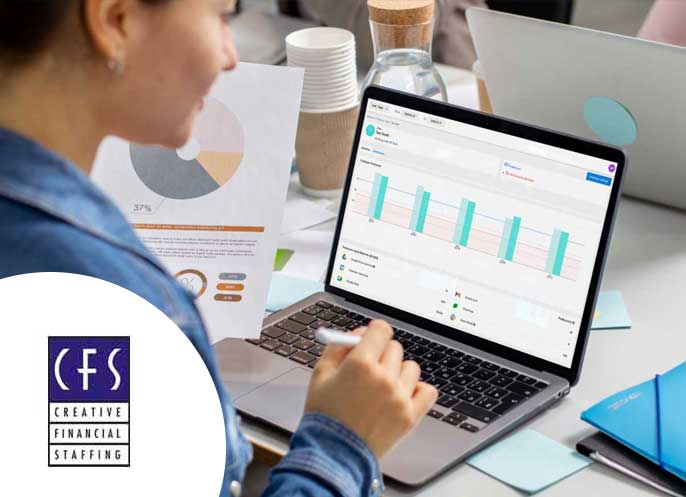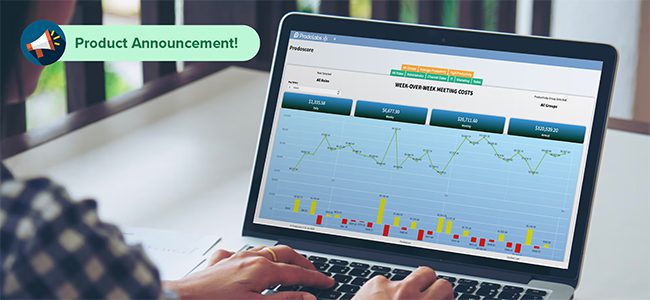Visibility that Creates Value
Maximizing Employee Productivity: Decoding Leading and Lagging Indicators
Lagging and leading indicators are metrics that have been used by businesses for many years. Each plays a different role, either tracking progress that has occurred or signaling where the business is going. It can be difficult to define the right indicators, let alone collect the right data to track them. This is especially true of leading indicators as there is no sure fire way to predict the future. Today, however, advances in technology and in predictive analytics have made it easier to collect and analyze the data necessary to unlock the true power of leading and lagging indicators. Businesses that take advantage of these new technologies and better understand lagging and leading indicators have an opportunity to out-perform their peers.
What is a Lagging or Leading Indicator?
Lagging indicators look at events that have already happened. By contrast, a leading indicator is forward-looking, an indication of a possible future state. A simple way to conceptualize lagging and leading indicators is to think of your business as a car. A leading indicator is like looking out your windshield, it shows you where you are going. Conversely, a lagging indicator is like looking out your rearview mirror, it shows you where you have been.
Another way to look at leading and lagging indicators is as inputs and outputs. A leading indicator is an input that can impact an output. Outputs can then be measured after the fact, becoming the basis for a lagging indicator. This also highlights how leading and lagging indicators play off each other, the leading activities (inputs) driving the performance and success of the lagging indicators (outputs).
Let’s look at a simple business example to further illustrate the difference and the power of leading and lagging indicators. You sell ice cream on the beach in the summertime and you want to predict how busy you’ll be on any given day so you can make intelligent staffing decisions. Temperature would be a good leading indicator to pay attention to. As temperature increases, people will get hotter. This will lead to an increase in the demand for cold ice cream. Therefore, on hot sunny days, it would be reasonable to bring on additional staff. The changing input, a higher temperature and sunnier weather, leads to the output of more sales.

There is great value in identifying an accurate leading indicator, capturing that knowledge, and then taking advantage of it. There are, however, a couple of challenges when it comes to indicators. First, you need to define the right ones. Choosing the wrong metrics will, at best, not tell you anything useful, and at worst, lead you down the wrong path.
company.

Choosing the Right Indicators
The first big step in choosing the right indicators is to develop your overall goal. Your goal defines the future state you wish to achieve. Without a goal, you have no context in which to choose key indicators. Goal setting can be difficult, but it is worth spending the time to think through what you want your goals to be. The more specific you are in this stage, the easier it will be to choose the right metrics that indicate progress toward those goals.
There are a few pitfalls to watch out for when defining your key indicators. First and foremost, you need to avoid having too many. Three to eight key performance indicators (KPIs) are usually enough. Tracking more than this often leads to analysis paralysis, where the sheer volume of information stifles decision making. KPIs should also be SMART: simple, measurable, actionable, relevant, and timely.
There are no hard and fast rules when it comes to defining your KPIs. The best KPIs are goal specific and the best goals are specific to the individual business.

Leveraging Technology to Measure Key Indicators
The larger your model or sample size, the more difficult to understand how your leading indicators impact your lagging indicators. Essentially, as the amount of data you’re analyzing increases, it is more difficult to track and report on key indicators. Here is where new technologies like artificial intelligence (AI), machine learning, and predictive analytics come into play. Entrepreneurs have recognized the value of identifying and understanding leading indicators to predict future behavior. In fact, the bulk of investment in AI has been to accomplish this task.
A machine programmed with AI knows how to respond when faced with a specific input. For example, using Alexa on an Amazon product can respond to a specific command like “Tell me the weather.” From this input, advanced programming allows an Echo device to search the internet for local weather conditions and translate that finding into a sentence answering the initial input request. The device has taken an input, a leading indicator, and provided an output, a description of the weather. The lagging indicator or output can then easily be validated by taking a walk outside.

Putting it Together: Key Indicators for Productivity
One area that companies look to improve is employee productivity. Making your workforce more efficient and effective impacts all aspects of your business for the better. Assuming the overall goal is to increase productivity, what are some KPIs you should look at and what kinds of technology can help you gather the right data to track progress?

KPIs for Productivity
Defining what productivity looks like is the first step to developing KPIs to improve productivity. Being productive looks different for different roles. A productive sales person will act much differently than a productive accountant. There are, however, a few organization wide metrics that you can start looking at. These will give you a rough idea at how productive your company is as a whole and how productive individual employees are.
Revenue per Employee
Revenue per employee (RPE) is a ratio that estimates the total revenue a company generates divided by its current number of employees. The idea being that the more productive an organization is the more likely it is that profits will increase. In general, the higher your RPE the more productive you are as an organization.
Employee Utilization
Employee utilization refers to the amount of an employee’s working time that is used for billable work, expressed as a percentage. This is most useful in a professional services setting. Utilization varies from job to job and no employee will spend all their time doing billable work as every project requires other activities like admin tasks, emails, billings, and meetings. Tracking employee utilization helps make intelligent hiring decisions. It also helps you to understand if employees are being over- or underutilized.
Focus Hours per Day
Focus hours per day looks at completely uninterrupted work time. It’s dedicated work, focusing on a task with undivided attention. The recent shift to an increase in remote work has brought focus hours per day to the forefront, as there have been discussions about whether the office or home work environment is more distracting.

Technologies that Drive Productivity
No matter what metrics you settle on, you’ll need a way to measure them. In the past, business leaders were often challenged with how to measure performance on a daily basis. Traditionally, they used lagging indicators because the technology to measure leading indicators simply didn’t exist. Today, business intelligence enabled by technology is at the heart of creating new levels of performance for companies.
By measuring leading indicators, business leaders can affect results. Tracking metrics like daily activity enables companies to be action oriented and influence their employees through coaching. Here are a few tools that can help measure and report on the productivity of your organization as a whole and your individual employees.
Employee Productivity Monitoring (EPM)
Productivity monitoring tracks employee actions throughout the day. This helps you visualize workflows for individuals, teams, and departments. With this data, you can identify top performers and under performers. It also helps show which of your employees might be on the verge of burnout.
Monitoring actions throughout the day can also let you know if an employee is thinking of leaving and enable you to step in before it’s too late when it makes sense. Empowered by AI, EPM software can detect the actions an employee is most likely to take before they leave for a new position.
Technology Stack Analysis
Technology is supposed to empower employees, making them more efficient and their jobs easier. Sometimes, however, your technology stack can be doing the exact opposite. Bloated, unwieldy tech stacks create a drag on productivity and wasted money on tools you don’t need. By tracking how employees use your company’s technology, you can identify gaps in usage from the start and provide real-time support before a hesitant employee loses interest or stops using a new tool completely.
Organization Network Analysis Tools
These tools look across your organization and track how people interact with each other on a day-to-day basis. Organization network analysis can help you identify the most engaged, productive employees as well as any silos within your organization and employees who may be disengaged.
Effective ONA analysis is particularly crucial during organizational changes like department restructurings. Ensuring that communication levels between departments and individual team members is at the desired level early-on can lead to massive productivity boosts over time.

Improving Performance with Leading Indicators
Having clear indicators of what to expect is incredibly beneficial and today, better measurement tools and business intelligence technologies are available to business leaders. Leveraging AI, companies can utilize predictive analytics to gain critical insights into how management teams can better understand their inputs or leading indicators. This knowledge can then have a positive impact on performance allowing businesses to act (or not) based on management’s intent and strategic direction. With robust data analytics, businesses can improve performance, enhance coaching opportunities, increase employee retention, and streamline the employee experience overall.
At Prodoscore, we help companies improve employee productivity with our suite of productivity monitoring tools. Contact us today and let us show you how our software creates more productive teams.



